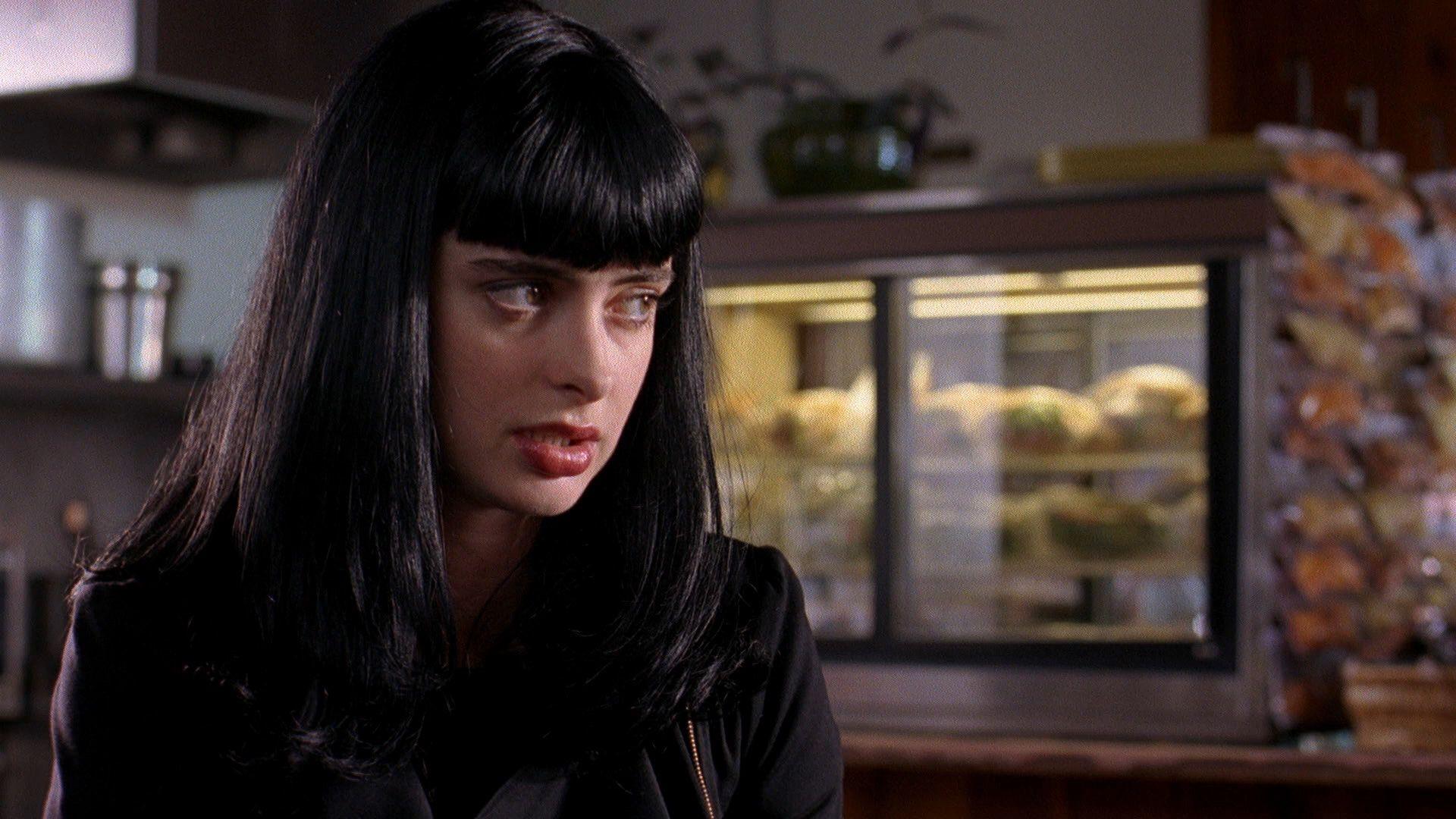Jane Margolis: Unpacking Breaking Bad's Most Tragic Catalyst
In the sprawling, morally ambiguous universe of AMC's "Breaking Bad," certain characters, despite their fleeting screen time, leave an indelible mark. Among them, Jane Margolis in Breaking Bad stands out as a pivotal, yet tragically brief, figure whose presence and ultimate demise profoundly reshape the trajectory of Jesse Pinkman and, by extension, the entire series. She is not merely a supporting character but a powerful catalyst, igniting transformations and influencing key events that resonate throughout the show's brutal narrative.
Jane's role is multifaceted: an artist, a recovering addict, Jesse's landlord, neighbor, and ultimately, his girlfriend. Her introduction brings a semblance of stability and romance into Jesse's chaotic life, yet her own struggles with addiction and her influence on Jesse quickly plunge them both into a downward spiral. Her story is a poignant exploration of love, addiction, and the devastating consequences that unfold when these elements intertwine, pushing not only Jesse but also Walter White to their breaking points.
Table of Contents
- Who Was Jane Margolis? A Brief Biography
- The Intersection of Two Troubled Souls: Jane and Jesse
- Jane's Role as a Catalyst for Transformation
- The Haunting Clues to Jane's Demise
- The Shocking Death: A Moment That Defined the Series
- Hero or Villain? Deconstructing Jane's Complexity
- The Lingering Shadow: Jane's Legacy in Breaking Bad
Who Was Jane Margolis? A Brief Biography
Introduced in the second season of "Breaking Bad," Jane Margolis quickly becomes an integral part of Jesse Pinkman's life. She is initially presented as his reserved, artistic neighbor and landlady in the duplex owned by her father, Donald Margolis. A talented tattoo artist, Jane possesses a creative spirit that resonates with Jesse's own artistic inclinations, despite their vastly different backgrounds. However, beneath her calm exterior lies a troubled past: Jane is a recovering addict, having been clean for 18 months when she first encounters Jesse.
Their relationship blossoms from landlord-tenant to a passionate, albeit volatile, romance. Jane's knowledge of the world, her independent spirit, and her artistic sensibilities initially offer Jesse a sense of belonging and understanding he rarely finds elsewhere. Yet, her history of reckless behavior and her eventual relapse into heroin abuse, tragically facilitated by her relationship with Jesse, set the stage for one of the series' most gut-wrenching moments. Her character, though only briefly around, leaves an indelible mark, serving as a critical juncture in Jesse's narrative arc.
Personal Data of Jane Margolis (Character)
| Attribute | Detail |
|---|---|
| Full Name | Jane Margolis |
| Occupation | Tattoo Artist |
| Relationship to Jesse | Neighbor, Landlord, Girlfriend |
| Family | Donald Margolis (Father) |
| Key Personal Trait | Recovering Addict (later relapses), Artistic, Independent |
| Status | Deceased (Season 2) |
The Intersection of Two Troubled Souls: Jane and Jesse
The relationship between Jane Margolis and Jesse Pinkman is a complex tapestry of connection, codependency, and ultimately, destruction. When they first meet, Jesse is reeling from the trauma of his previous life and seeking solace, while Jane is navigating the precarious path of sobriety. Their initial interactions are cautious, but a shared sense of loneliness and an unconventional outlook on life quickly draw them together. Jane, with her artistic background and lived experience, understands Jesse in a way few others do, offering him a sanctuary from the relentless pressures of Walter White and the drug trade.
However, this connection soon becomes a double-edged sword. Despite her own past struggles, Jane introduces Jesse to heroin, a decision that seals their fate. While Jesse had a history with various drugs, heroin addiction marks a new, terrifying low for him, and Jane, despite her initial 18 months of sobriety, succumbs to the temptation alongside him. Their shared addiction creates an intensely insular world, isolating them from outside influences, including Jane's father, Donald, and the increasingly desperate Walter White.
A Love That Wrecked: The Downward Spiral
The dynamic between Jane and Jesse quickly devolves into a mutually destructive cycle. They enable each other's worst impulses, their love becoming inextricably intertwined with their shared addiction. Their days become a blur of drug-induced stupor, neglecting responsibilities, and alienating anyone who tries to intervene. This downward spiral is particularly evident when Jesse's drug addiction nearly ruins a crucial drug deal, prompting Walter White's desperate intervention. The phrase "the love that wrecked Jesse" perfectly encapsulates their relationship; it was a bond forged in vulnerability but consumed by the very demons they both sought to escape.
Their relationship highlights a critical theme in "Breaking Bad": the corrosive nature of addiction and how it can warp even genuine affection into something toxic. While it's easy to point fingers, the show masterfully portrays how both Jane and Jesse are at fault for the downward spiral they went on. They were, as the data suggests, "severely unhealthy for each other," creating a feedback loop of enabling behavior that pushed them further into the abyss. This period marks a significant turning point for Jesse, illustrating the profound depths of his vulnerability and his capacity for self-destruction when left unchecked.
Jane's Role as a Catalyst for Transformation
Beyond her romantic involvement with Jesse, Jane Margolis serves as a powerful catalyst for transformation, shaping Jesse’s journey and influencing key events that resonate throughout the series. Her presence forces Jesse to confront his desires for a normal life, his need for genuine connection, and the devastating consequences of his choices. She pushes him to imagine a future beyond the drug trade, albeit one clouded by their shared addiction. This vision of escape, however fleeting, becomes a driving force for Jesse, even after her death.
Moreover, Jane's influence extends beyond Jesse. Her demands for Jesse's share of the drug money directly impact Walter White's plans, creating a critical conflict that sets the stage for her demise. She challenges Walt's control over Jesse, inadvertently forcing Walt to make a decision that will forever haunt him and redefine his moral compass. Jane's actions, born out of a desire for financial security and a clean start with Jesse, inadvertently lead to a chain of events with far-reaching consequences for all main characters.
Beyond a Love Interest: A Force of Change
Jane is more than just a love interest; she is a force of change within the narrative. Her character adds tension and complexity, pushing Jesse—and even Walter White—into new, uncomfortable territories. For Jesse, she represents both the promise of love and the peril of addiction. Her artistic background and independent spirit offer him a glimpse of a different life, one where he might be seen and valued for more than his role in Walt's criminal enterprise. Her insistence on financial independence and her willingness to stand up to Walt, even in her compromised state, demonstrate a strength of will that is often overlooked amidst her struggles.
Her role as a person battling addiction also adds a layer of raw realism to the show. Her relapse, while tragic, is a stark reminder of the insidious nature of drug dependency and the difficulty of maintaining sobriety. Through Jane, "Breaking Bad" explores the human cost of the drug world, not just through violence, but through the quiet, destructive power of addiction itself. Her impact on Jesse's character development is undeniable; she forces him to grow, albeit through immense pain, from a naive pawn into a more self-aware, albeit deeply traumatized, individual.
The Haunting Clues to Jane's Demise
One of the most chilling aspects of Jane Margolis's death is the retrospective realization that "the clues were all right there in front of us." "Breaking Bad" is renowned for its meticulous foreshadowing, and Jane's storyline is no exception. Her history of "reckless behavior and heroin abuse" is repeatedly highlighted, signaling a vulnerability that could easily lead to tragedy. The very nature of her relationship with Jesse, fueled by their shared addiction, was a ticking time bomb.
The show subtly builds tension around her character. Her father, Donald Margolis, an air traffic controller, is introduced as a concerned parent who tries to intervene, his profession ironically foreshadowing the plane crash that indirectly results from his grief over Jane's death. Even the artwork in her apartment, particularly a painting depicting a figure drowning, can be seen as a macabre premonition. The "brutal logic of Breaking Bad" dictates that actions have consequences, and for Jane, her relapse and her entanglement with Jesse's dangerous world inevitably lead to a devastating outcome. The narrative carefully constructs a sense of impending doom around her, making her shocking death, in hindsight, tragically inevitable within the show's dark universe.
The Shocking Death: A Moment That Defined the Series
The death of Krysten Ritter's Jane Margolis is undeniably one of "Breaking Bad's" most shocking and pivotal moments. It occurs in the episode "Phoenix," when Walter White, having just returned to Jesse's apartment to retrieve the drug money, finds Jane and Jesse unconscious in bed, high on heroin. As Jane begins to choke on her own vomit, Walter hesitates, watches her struggle, and ultimately chooses not to intervene, allowing her to die. This act of calculated inaction is a chilling turning point for Walter's character, solidifying his descent into moral depravity.
The scene is brutal in its simplicity and profound in its implications. It's not a violent murder, but a cold, deliberate decision to let someone die for a perceived greater good – in Walt's mind, saving Jesse from a destructive relationship and securing his own criminal enterprise. The immediate aftermath is devastating for Jesse, who wakes up to find his girlfriend dead, triggering a spiral of grief, guilt, and renewed addiction that haunts him for the rest of the series. For Walter, it's a step further down the path of becoming Heisenberg, a man capable of truly monstrous acts.
Why Jane Had to Die: The Creators' Perspective
The decision to kill off Jane Margolis was a difficult but, according to the creators, a narrative necessity. Vince Gilligan, the show's creator, along with Bryan Cranston (Walter White) and Krysten Ritter (Jane Margolis), have all spoken about the scene and its significance. Gilligan has stated that Jane had to die to propel Jesse's character arc forward and to further darken Walter White's soul. It was a brutal act designed to show the audience just how far Walt was willing to go, and the lengths to which he would manipulate and destroy lives to protect his empire and his perceived control over Jesse.
Bryan Cranston has described the scene as one of the most challenging of his career, highlighting the moral ambiguity and the internal struggle Walt faced, even if fleetingly. Krysten Ritter, for her part, understood the narrative purpose of Jane's death, acknowledging that it served a crucial function in the larger story. Her death was not arbitrary; it was a calculated plot point designed to be a "moment Jesse stopped being a pawn in someone else’s game and started becoming his own person." It was the ultimate sacrifice for the sake of the story's progression, forcing Jesse to confront the harsh realities of his life and pushing Walter deeper into the abyss of his own making. "Breaking Bad" never shied away from chilling ways to kill off characters, and Jane's demise stands as a testament to the show's uncompromising vision.
Hero or Villain? Deconstructing Jane's Complexity
Was Jane Margolis in "Breaking Bad" a hero or a villain? The answer, much like many characters in the show, lies in the profound complexity of her character. She defies easy classification, embodying shades of both heroic and villainous qualities throughout her brief but impactful presence. This moral ambiguity is a hallmark of "Breaking Bad," and Jane is a prime example of a character who exists in the grey areas.
On one hand, Jane exhibits qualities that could be seen as heroic. She is an artist, a creative soul who initially tries to maintain her sobriety and build a life. Her love for Jesse, though ultimately destructive, appears genuine. She pushes him to demand his money from Walt, advocating for his financial independence and a potential escape from the drug world, demonstrating a desire for a better life for both of them. She is independent, assertive, and unafraid to challenge authority, even Walt's.
However, Jane also displays qualities that lean towards villainy. Her decision to introduce Jesse to heroin, despite her own recovery, is a deeply problematic act that sets them both on a path of self-destruction. Her manipulative tendencies, particularly when she blackmails Walter White for Jesse's money, show a darker, more opportunistic side. Her relapse, while understandable given the pressures of her life and relationship, ultimately contributes to the tragic outcome. She enables Jesse's addiction, and he hers, creating a toxic codependency that serves as a barrier to any genuine recovery for either of them.
Ultimately, Jane is a deeply flawed human being, a victim of her own struggles and the dangerous world she becomes entangled in. Her character is a mirror reflecting the show's central theme: that good people can do bad things, and bad situations can corrupt even the purest intentions. To label her simply as a hero or a villain would be an oversimplification, stripping away the very nuances that make her story so compelling and tragic.
The Lingering Shadow: Jane's Legacy in Breaking Bad
Though Jane Margolis is only briefly around, her haunting death hangs over the main characters for the rest of the series, particularly Jesse Pinkman. Her demise is not just a plot point; it's a psychological scar that profoundly shapes Jesse's subsequent actions, his struggles with addiction, and his increasingly fractured relationship with Walter White. The trauma of losing Jane, coupled with the knowledge of Walt's inaction, fuels Jesse's guilt, anger, and deep-seated desire for redemption.
For Walter, Jane's death marks a significant moral erosion. It's a secret he carries, a dark stain on his conscience that occasionally surfaces, particularly in his interactions with Jesse. His complicity in her death creates an irreparable rift between him and Jesse, even when they attempt to reconcile. It's a foundational lie that undermines any pretense of paternal care Walt might claim to have for Jesse, revealing the true depths of his manipulative and self-serving nature. The memory of Jane serves as a constant, unspoken barrier between them.
From Pawn to Person: Jesse's Evolution Post-Jane
In the brutal logic of "Breaking Bad," Jane’s death was the moment Jesse stopped being a pawn in someone else’s game and started becoming his own person. The sheer devastation of her loss forces him to confront the grim realities of his life and the consequences of his choices. He attempts to get clean, to find meaning outside of Walt's orbit, and to escape the cycle of violence and addiction that has consumed him. His journey through recovery, his attempts to make amends, and his eventual fight for freedom are all, in part, a direct response to the trauma of Jane's death.
Her legacy is one of profound pain but also of catalytic change. Jane Margolis was the love that wrecked Jesse, but paradoxically, her loss was the crucible that shaped him. It stripped away his remaining innocence, forcing him to mature and to seek a path independent of Walter White's destructive influence. Her story underscores the show's unflinching portrayal of consequences, demonstrating how even a seemingly minor character can trigger a cascade of events that irrevocably alter the destinies of the series' protagonists.
Conclusion
Jane Margolis, the tattoo artist, neighbor, landlord, and tragic girlfriend of Jesse Pinkman, remains one of "Breaking Bad's" most unforgettable characters. Despite her relatively brief appearance, her impact reverberates throughout the series, serving as a powerful catalyst for transformation, particularly for Jesse. Her story is a poignant exploration of love, addiction, and the devastating consequences that arise when these forces collide. From her initial connection with Jesse to their shared downward spiral into heroin abuse, Jane's character adds immense tension and complexity, pushing both Jesse and Walter White into darker, more morally ambiguous territories.
Her haunting death, meticulously foreshadowed and executed with chilling precision, is a defining moment that irrevocably alters the course of the narrative. It solidifies Walter White's descent into villainy and acts as the brutal catalyst that forces Jesse Pinkman to begin his painful journey from a manipulated pawn to a person desperately seeking his own path. Jane Margolis was more than just a love interest; she was a mirror reflecting the show's themes of moral decay and the human cost of the drug trade, leaving a lingering shadow that underscores the profound and often tragic interconnectedness of all lives in the world of "Breaking Bad."
What are your thoughts on Jane Margolis's role in "Breaking Bad"? Do you see her as a victim, an enabler, or a tragic catalyst? Share your insights and interpretations in the comments below. And if you're looking to dive deeper into the intricate character dynamics and plot developments of this iconic series, explore our other articles on "Breaking Bad" character analyses and pivotal plot breakdowns.
- Gotta Be Quicker Than That
- Masajes Con Finales Felices
- Urbabydollxo Erome
- Simone Biles Husband Height
- Ms Rachel Potty Training

Jane Breaking Bad Wallpapers - Top Free Jane Breaking Bad Backgrounds

Jane Margolis | Breaking Bad Wiki | Fandom

Jane Breaking Bad Wallpapers - Top Free Jane Breaking Bad Backgrounds